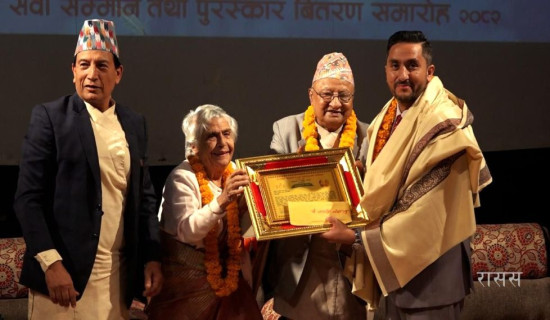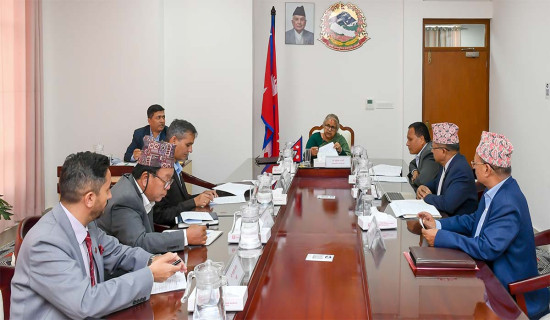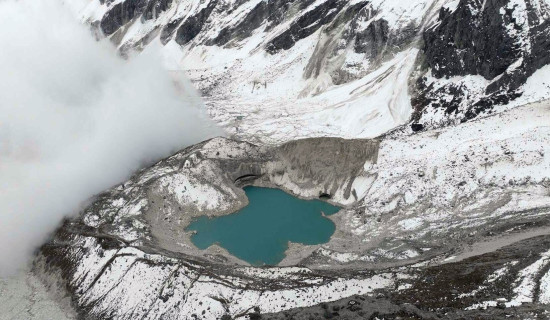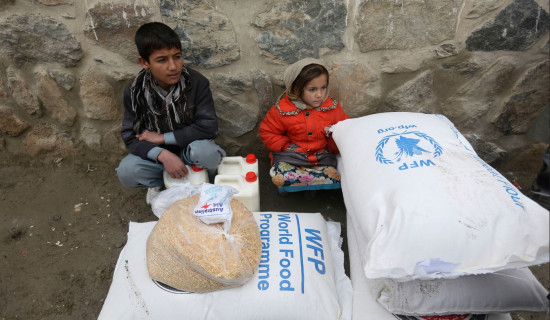- Thursday, 16 October 2025
Inaugural Journal From A Reputed Institution
The Kathmandu School of Law (KSL) has established its name and fame in the field of what can be called state-of-the-art legal education as far as Nepal is concerned and has come out with its publication in the form of a journal of international standing. The institution came into being in 2000 as a non-profitable and community-based college.
As far as the establishment of law colleges in Nepal is concerned, the first law college came into being in 1954 though attempts were made earlier to start a law college (called Aain Kaalej) when Prime Minister Shri Teen Maharaj Padma Shumshere started his policy of legal reforms, albeit abortive.
A cursory look at the flagship publication entitled Asian Journal of International Affairs (AJIA) taken as the first such publication in Nepal, fairly indicates that the new journal promises to be an important step in the field especially in the context of Asia if we examine quite comprehensive treatment it has given to various issues of contemporary interest. However, given the nature of the topic, its coverage is bound to transcend Asia, if not the whole universe.
It is said that the launch of any publication is a good beginning but is a very challenging act to sustain its minimum standard. The challenge is all the more visible in upholding its credentials in terms of innovation and research. Besides, like other publications, print magazines are facing an onslaught of information technology when many things are conveniently available online.
Before talking of the first journal, it may be appropriate to mention that the KSL has won accolades for its constant academic standard and got the prestigious status of becoming the first law college to receive coveted quality assurance and accreditation (QAA) from the University Grants Commission as of June 28, 2022. The popular college currently under the administrative and academic jurisdiction of Purwanchal University is taking necessary measures to soon metamorphose itself into Nepal's first law university.
Coming to the actual content of the newly started AJIA, nine research articles related to a wider field as country-specific write-ups on various areas including aspects of governance, democracy, ideology and inclusion, bilateral relations, multilateral or regional frameworks and the role of countries in shaping and influencing such organizations. Other areas dealt with succinctly by the journal essentially pertain to terrorism, and even theories like Bie-Modern.
Professor Dr Yubaraj Sangroula, Executive Director, KSL, has contributed the longest article and virtually a tone-setting piece covering seven decades of Nepal-India relations highlighting aspects of bilateral ties between two close neighbours.
A close friend since our mutual acquaintance at Patna when he was enrolled for LLM, we used to meet him during our frequent trips there as another close friend, Professor Roopmal Chandumal Hingorani, was both Dean of Law Faculty and Dean of Students' Welfare.
With quite a comprehensive detail of Nepal-India relations from a historic perspective, Sangroula's article deals with what he calls a critical review of the Nehruvian-colonial legacy with a prescription on pursuance of the policy of trilateralism as a remedy, way forward or even panacea. There may be a sharp divide on the part of readers and experts to agree or disagree on the queer sense of equations or supposed similarity that the writer seems to apportion on both colonialist masters and their democratic successors as far as the foreign policy of India is concerned.
But at least from the current perspective and real-time situation, and taking into account differing perceptions of our biggest neighbours, it may be difficult to sell the idea of trilateralism to both India and China at least for the time being.
In a way, trilateralism as a concept may be a practical option in the purely academic sense in the context of difficult relations governing New Delhi and Beijing, and vast opportunities prevailing in the region. It may, however, be recalled that Nepal has entered into several treaties or agreements mostly about bilateral relations. Both India and China have agreed or so far preferred to enter into agreements with Nepal based on strict bilateralism, and not on regional and multilateral approaches including trilateralism.
Unless there is any agreement on an equal partnership among Nepal, India and China that seems to be far-fetched at least for the time being both in the context of prevailing ties between Nepal's two bigger neighbours and their intrinsic policy dynamics, trilateralism as a practical option may remain at best more aspirational and even reduced to political or diplomatic kite-flying, to quote a senior Nepali diplomat who read the article and prefers to remain anonymous.
Other articles in the journal that have a significant bearing on Nepal include Parbat Kumar Rai's Governance, Democracy and Inclusion in the Perspective of Nepal, and Higher Defense Organization in Nepal authored by Suresh Sharma.
Besides, there is one interesting essay on an all-encompassing subject, US-China relations under the title, Silicon Valley to Silk Road: Chimerica to Chiorld. The magazine incorporates one section allotted to its adviser's section. Dr Shambhu Ram Simkhada has contributed an article in this section on a wider gamut of the Biden Doctrine, Xi's Theory, and Afghanistan.
In its book review section, Purushottam Poudel has also chosen Dr Shambhu Ram Simkhada's book entitled Nepal India China, Relations in the 21st Century calling the publication a useful reference material for correctly grasping the vitality and complexity of international relations and foreign policy-making in the context of Nepal's ties with two big neighbours.
One major attraction of the journal is AJIA Dialogue which involves a more complex theme, Geopolitical Turbulence in South Asian Politics: What Nepal can learn from Afghanistan Crisis? Four experts in the dialogue are Dhananjay Tripathi (India), Khaganath Adhikari (Nepal), Li Tao (China) and Nasreen Ghufran (Pakistan). One can read inbuilt differences in their approaches as far as terrorism and modality of relations including big power dynamics are concerned.
I congratulate KSL for starting an international standard journal and, as is rightly said, a good beginning is a half done and we wish for its continued success. We also extend greetings to the prestigious institution in its endeavours to offer quality education in various aspects of the law.
(Dr. Bhattarai is a former foreign secretary, ambassador and author.)

















